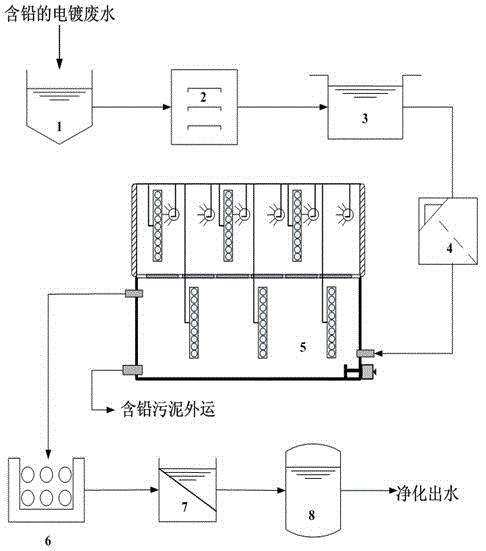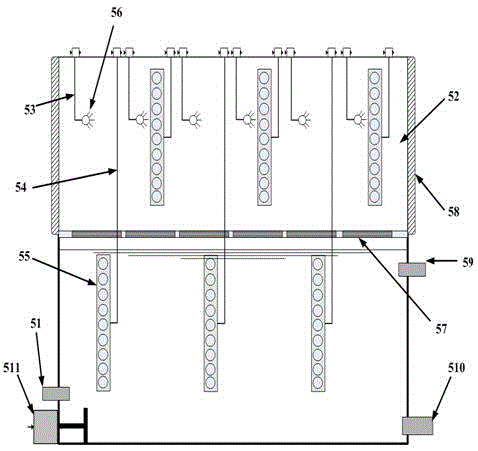Treatment method for removing lead in electroplating wastewater
A technology of electroplating wastewater and treatment method, which is applied in the fields of metallurgical wastewater treatment, neutralization water/sewage treatment, water/sewage multi-stage treatment, etc. The effect of improving processing capacity, low operation and maintenance cost, and improving reaction efficiency
- Summary
- Abstract
- Description
- Claims
- Application Information
AI Technical Summary
Problems solved by technology
Method used
Image
Examples
Embodiment Construction
[0026] Such as figure 1As shown in the treatment method for removing lead in electroplating wastewater, the lead-containing electroplating wastewater enters the collection well 1 through the wastewater pipeline, where it is collected and preliminarily stabilized. The outlet of the collection well 1 is connected to the coarse grid 2 through the wastewater pipeline. To remove large-diameter solid matter in the wastewater, the outlet of the coarse grid 2 is connected to the primary sedimentation tank 3 through the wastewater pipeline, where the insoluble matter in the wastewater is further removed, and the outlet of the primary sedimentation tank 3 is connected to the pH adjustment tank 4 through the wastewater pipeline, The pH value of the waste water is precisely adjusted here. The pH value of the effluent from the pH value adjustment pool 4 ranges from 5.5 to 6.5 to meet the pH value requirements of the incoming water of the bio-fermentation-precipitation reaction purification ...
PUM
| Property | Measurement | Unit |
|---|---|---|
| pore size | aaaaa | aaaaa |
Abstract
Description
Claims
Application Information
 Login to View More
Login to View More - R&D Engineer
- R&D Manager
- IP Professional
- Industry Leading Data Capabilities
- Powerful AI technology
- Patent DNA Extraction
Browse by: Latest US Patents, China's latest patents, Technical Efficacy Thesaurus, Application Domain, Technology Topic, Popular Technical Reports.
© 2024 PatSnap. All rights reserved.Legal|Privacy policy|Modern Slavery Act Transparency Statement|Sitemap|About US| Contact US: help@patsnap.com









